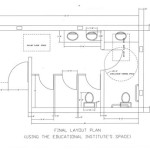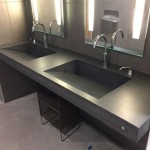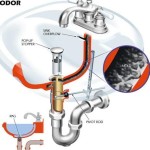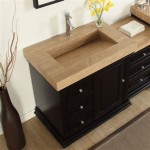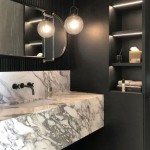Best Mid-Century Modern Bathroom Vanities: A Comprehensive Guide
The mid-century modern aesthetic, characterized by clean lines, natural materials, and functional design, has experienced a significant resurgence in recent years. This enduring style lends itself particularly well to bathroom design, creating spaces that are both stylish and practical. A key element in achieving this look is the bathroom vanity, which serves as a focal point and provides essential storage. Selecting the right mid-century modern bathroom vanity requires careful consideration of various factors, including size, materials, style, and functionality.
This article serves as a comprehensive guide to understanding and selecting the best mid-century modern bathroom vanity for individual needs and preferences. It will explore the defining characteristics of the style, the various materials commonly used, key design features, and essential considerations for ensuring a seamless integration into a bathroom space.
Understanding the Mid-Century Modern Style
Mid-century modern design emerged in the post-World War II era, roughly spanning from the mid-1940s to the 1960s. It was a reaction against the ornate and heavily decorated styles of the past, embracing simplicity, functionality, and the beauty of natural materials. Key characteristics of mid-century modern design include:
- Clean Lines and Geometric Shapes: Furniture and fixtures typically feature simple, uncluttered lines and geometric forms, avoiding excessive ornamentation.
- Natural Materials: Wood, particularly walnut, teak, and oak, is frequently used, often showcasing the natural grain and texture. Stone, like marble or granite, is also incorporated in countertops and accents.
- Minimalism and Functionality: The emphasis is on creating functional spaces with minimal clutter. Furniture pieces are designed to serve a purpose and are not purely decorative.
- Warm Colors and Earth Tones: A palette of warm colors, such as browns, oranges, yellows, and greens, is commonly used, often paired with natural wood tones.
- Integration with Nature: Designs often incorporate elements that create a connection with the outdoors, such as large windows, indoor plants, and natural materials.
In the context of bathroom vanities, these characteristics translate into designs that prioritize clean lines, natural wood finishes, and functional storage solutions. The mid-century modern vanity aims to be both aesthetically pleasing and highly practical.
Key Materials for Mid-Century Modern Bathroom Vanities
The choice of materials significantly impacts the aesthetic and durability of a bathroom vanity. Certain materials are particularly well-suited to the mid-century modern style. These include:
Wood: Wood is the most common material used in mid-century modern bathroom vanities. Walnut, with its rich, dark grain, is a popular choice for creating a sophisticated and luxurious look. Teak, known for its durability and water resistance, is another excellent option, particularly for bathrooms prone to moisture. Oak, with its lighter color and pronounced grain, offers a more casual and natural feel. The wood is often finished with a clear coat to protect it from moisture and highlight the natural beauty of the grain.
Stone: Stone countertops, such as marble, granite, or quartz, complement the natural wood finishes of mid-century modern vanities. Marble offers a classic and elegant look, while granite provides durability and resistance to staining. Quartz is a manufactured stone that offers a wide range of colors and patterns, as well as excellent durability and low maintenance. The choice of stone should be carefully considered to ensure it complements the wood finish and overall bathroom design.
Metal: Metal accents, such as drawer pulls, legs, and trim, can add a touch of sophistication and contrast to a mid-century modern vanity. Brushed brass, chrome, and stainless steel are common choices, offering a sleek and modern look. The metal finish should be chosen to complement the wood and stone finishes used in the vanity. Matte black is also a popular choice for a more contemporary take on the mid-century modern style.
Laminate: While solid wood is highly desirable, laminate options provide a more budget-friendly alternative. High-quality laminates can effectively mimic the look and feel of natural wood, offering a durable and water-resistant surface. Laminate vanities are often easier to clean and maintain than solid wood vanities. When choosing a laminate vanity, it is important to select a high-quality product with a realistic wood grain pattern and a durable finish.
Essential Design Features of Mid-Century Modern Vanities
Beyond the materials used, several key design features define the mid-century modern bathroom vanity. These features contribute to the overall aesthetic and functionality of the piece. They include:
Legs or Tapered Feet: Many mid-century modern vanities feature legs or tapered feet that elevate the vanity off the floor. This design element adds a sense of lightness and airiness to the bathroom, while also making it easier to clean underneath the vanity. The legs are typically made of wood or metal, often with a simple, tapered design.
Slab Doors and Drawers: Slab doors and drawers, characterized by their flat, unadorned surfaces, are a hallmark of mid-century modern design. They emphasize the clean lines and minimalist aesthetic of the style. The doors and drawers often feature simple, recessed pulls or no hardware at all, maintaining a sleek and uncluttered look.
Integrated Sinks: Integrated sinks, where the sink basin is seamlessly integrated into the countertop, are a popular choice for mid-century modern vanities. This design creates a clean and streamlined look, while also eliminating the need for a separate sink basin. Integrated sinks are typically made of the same material as the countertop, such as stone or quartz.
Open Shelving: Some mid-century modern vanities incorporate open shelving, providing a space to display decorative items or store frequently used items. Open shelving can add visual interest to the vanity and create a more open and airy feel. However, it is important to keep the shelves organized and clutter-free to maintain the minimalist aesthetic of the style.
Asymmetrical Designs: While symmetry is sometimes used, asymmetrical designs are also common in mid-century modern vanities. An asymmetrical design can create a more dynamic and visually interesting look. For example, a vanity might feature a single sink offset to one side, with drawers and cabinets arranged in an asymmetrical pattern.
Minimalist Hardware: Hardware, when used, is typically minimalist in design. Simple, geometric pulls or knobs in brushed metal finishes are common choices. The hardware should complement the overall aesthetic of the vanity and not detract from the clean lines and natural materials.
Considerations for Selecting the Right Vanity
Choosing the best mid-century modern bathroom vanity requires careful consideration of several practical factors. These considerations include:
Size and Space: The size of the vanity should be appropriate for the size of the bathroom. Measure the available space carefully before selecting a vanity to ensure it fits comfortably and does not overcrowd the room. Consider the placement of other fixtures, such as the toilet and shower, when determining the optimal size for the vanity.
Storage Needs: Evaluate storage needs to determine the appropriate number of drawers, cabinets, and shelves. Consider the items that will be stored in the vanity, such as toiletries, towels, and cleaning supplies. A well-designed vanity should provide ample storage to keep the bathroom organized and clutter-free.
Plumbing Considerations: Consider the existing plumbing configuration when selecting a vanity. Determine the location of the water supply lines and drainpipe to ensure they align with the vanity's plumbing connections. It may be necessary to modify the plumbing to accommodate the new vanity.
Lighting: Lighting is an important consideration when choosing a bathroom vanity. Consider the existing lighting in the bathroom and how it will interact with the vanity. Add additional lighting, such as sconces or a vanity light bar, to provide adequate illumination for tasks such as shaving and applying makeup. The lighting should complement the overall aesthetic of the bathroom and create a warm and inviting atmosphere.
Budget: Establish a budget before beginning the search for a vanity. Mid-century modern vanities range in price from budget-friendly laminate options to high-end solid wood models. Determine how much you are willing to spend and focus on finding a vanity that meets budget and aesthetic requirements.
Installation: Decide whether to hire a professional installer or to install the vanity yourself. Installing a bathroom vanity can be a complex task, requiring plumbing and carpentry skills. Unless you have experience with these types of projects, it is generally recommended to hire a professional installer to ensure the vanity is installed correctly and safely.
By carefully considering these factors, selecting the right mid-century modern bathroom vanity can significantly enhance the aesthetic and functionality of a bathroom space. The enduring style of mid-century modern design ensures a timeless and sophisticated look that will be enjoyed for years to come.

New Hand Built Mid Century Style Bathroom Vanity Cabinet

Best Mid Century Modern Bathroom Vanities Of 2024

36 Off Set Mid Century Style Bathroom Vanity Cabinet In

Mid Century Modern Bathroom Design Inspo The Best Affordable Black Accessories Kristina Lynne

Best Mid Century Modern Bathroom Vanities Of 2024

The Best 19 Small Bathroom Vanities Of 2024

Floating Mid Century Style 6 Bathroom Vanity Cabinet In

37 Amazing Mid Century Modern Bathrooms To Soak Your Senses Bathroom Tile Midcentury

Mid Century Modern Bathrooms Design Ideas

20 Mid Century Modern Bathroom Ideas Top Design
Related Posts
